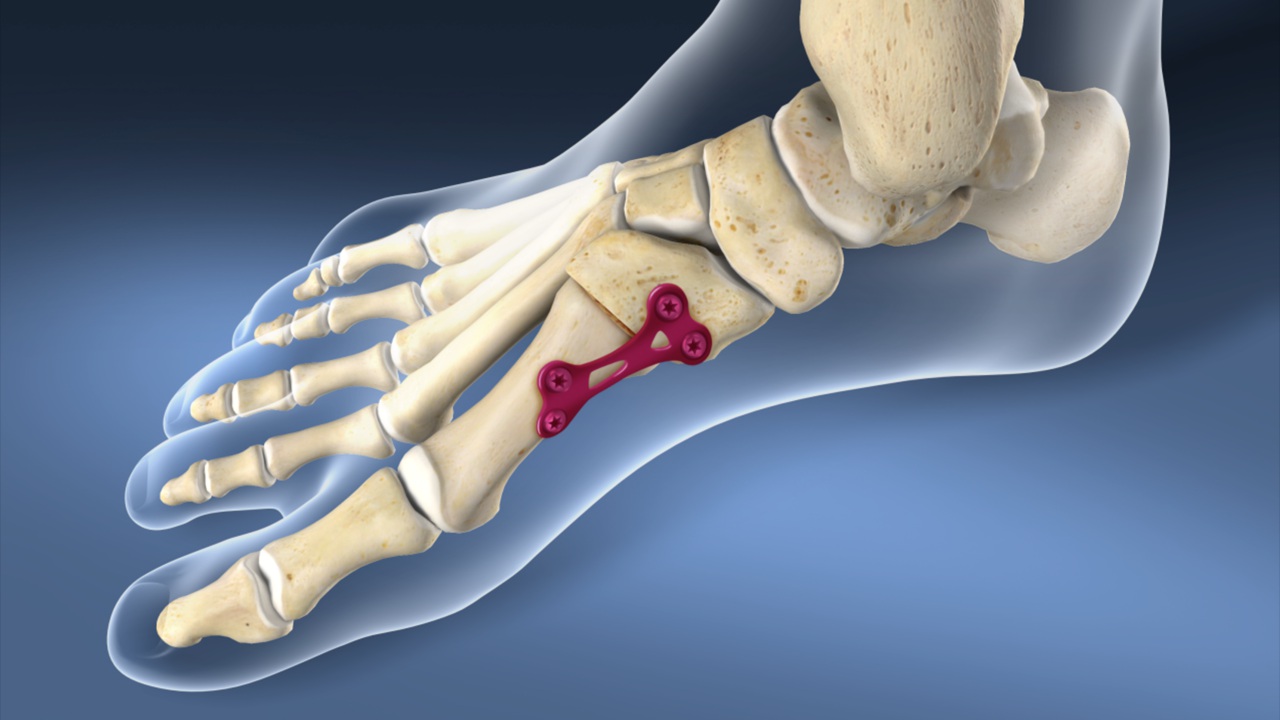ARTHRODESIS
What’s Arthrodesis?
Arthrodesis, also known as artificial ankylosis, joint fusion or synthesis, refers to the artificial induction of joint ossification between two bones via surgery.
In other words, arthrodesis refers to a form of orthopedic surgery in which the surgeon fuses two or more bones together to form a larger bone. In this process, any diseased cartilage between these two bones require removal, with the ends of these bones cut off and the two bones connected to one another using metal internal fixation, such as screws or plates. The two bones eventually grow into one another, fusing to form one bone.
After this, no further motion occurs in the joint, but it achieves stability and most importantly, the patient no longer experiences pain caused by arthritis or instability.
Surgeons carry out this procedure in order to relieve problematic pain in a joint which the patient can’t manage by pain medication, splints, or other commonly suggested treatments. The usual causes of such pain include fractures which disrupt the joint, severe sprains, and arthritis. Surgeons most commonly perform this procedure on areas such as the joints in the ankle, spine, hand and foot.
Originally, specialists also performed knee and hip arthrodesis as pain-relieving procedures, but with significant progress and success achieved in hip and knee arthroplasty, arthrodesis of these large joints no longer proved necessary as a primary procedure. Now, specialists only propose arthrodesis as a procedure of last resort in cases of unsuccessful arthroplasties.
Method
The surgeon first creates a bone graft between the two bones using a bone from elsewhere in the patient’s body (autograft) or using donor bone (allograft) from a bone bank. Surgeons generally prefer bone autografts due to the fact that it eliminates the risks associated with allografts. Furthermore, bone autografts contain native bone-forming cells (osteoblasts), so the graft itself forms new bone mass (osteoinductive), as well as serving as a matrix or scaffold to new bone growing from the bridged bones (osteoconductive). The main shortcoming of bone autograft includes the limited supply available for harvest.
One advantage of allografts over autograft includes its availability in large quantities. However, during the treatment process the bone goes through following harvest, which usually involves deep-freezing and may also involve demineralization, irradiation and/or freeze-drying, kills living bone or bone marrow cells.
Also, certain processing techniques have shown to also retain acid-stable osteoinductive proteins in cortical bone grafts, so that surgeons can consider both osteoconductive and osteoinductive.
Specialists can attach titanium alloy implants (plates and screws) to the two bones to hold them together in a position which favors bone growth. A combination of the above methods can also facilitate appropriate bony fusion.
At the completion of the procedure and healing, which takes place over a period of several weeks to over a year, the two adjoining bones fuse and no motion occurs between these bones. This can have the effect of strengthening the bones, as in the case of anterior lumbar interbody fusion (ALIF).
What’s Arthrodesis Used For?
This procedure remains one of the “emergency” surgeries used by surgeons to treat joint fractures, arthritis and other conditions that can affect the mobility of a joint. In cases of unsuccessful pain management, arthrodesis proves a viable solution. However, doctors often consider this procedure as a last resort treatment when other options have failed to yield positive results. The best candidates for joint fusion include individuals who still have strong bones on either side of the joint and strong immune systems to aid healing process.
What are the Risks of Arthrodesis?
Bleeding
The patient may bleed more than expected or get an infection. Nerves may also experience damage during surgery. One may also experience numbness or develop a hematoma. A hematoma refers to a collection of blood that may form in a muscle or in the tissues just under the skin. In arthroscopic surgery, the doctor may need to change to an open surgery if any unexpected problems occur.
Poor Bone Fusion
The bones in the joint may not fuse as expected and the surgeon may need to redo the surgery. In knee arthrodesis, the length of one’s leg may change. The patient may need another surgery to make the lengths of both legs the same.
Believe you suffer from Arthrodesis?

